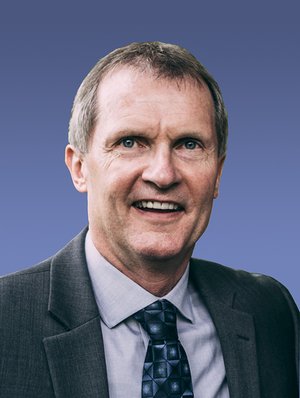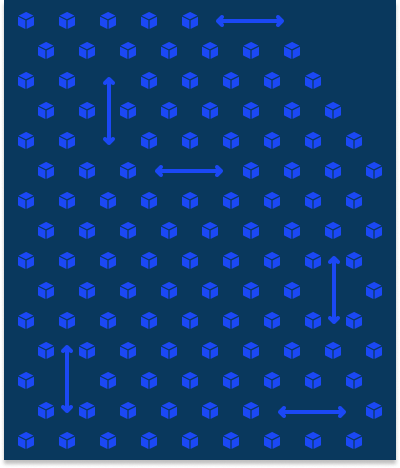About
The ASTM International Conference on Additive Manufacturing (ASTM ICAM 2022), sponsored by the ASTM International Additive Manufactured Center of Excellence (AM CoE), was held October 31 – November 4, 2022 in Orlando, FL at the JW Marriott Orlando Bonnet Creek Resort and Spa.
This was ASTM International’s seventh annual flagship event related to standardization, qualification, and certification with an emphasis on industry specific requirements addressing the entire AM process chain. This event involved many ASTM committees and external stakeholders, setting the stage to bring experts from all around the world to exchange the latest advancement in the field of additive manufacturing with emphasis on transition of research to application through standardization.
The implementation of additive manufacturing training and recruitment programs such as the Student Presentation Competition and Young Professional in AM awards, will also be offered. Additionally, the recipients of the three prestigious 2022 ASTM International Additive Manufacturing Awards of Excellence in Education, Research, and Standardization were announced during this event.
As AM technologies are adopted by various industries, establishing feedstock-process-structure-property-performance relationships becomes essential for qualification and certification of parts in safety critical applications. This conference addresses application specific requirements of various industry sectors in addition to covering the fundamentals of AM process chain. Industry, academia, and government agency professionals in the AM community are invited to address the current and future state of:
- Industry standards
- Design principles
- Qualification and certification
- Innovations in the industry
- Materials and processes
- Data management, sharing, analysis and beyond
Materials of interest include metals, polymers, composites, electronics, ceramics, and other related feedstocks.
Organizers
-
Auburn University
Nima Shamsaei
Show MoreDirector – National Center for Additive Manufacturing Excellence (NCAME)
334.844.4839
ICAM 2022 Highlights
All ICAM 2022 Photos
(422 Images)
Short Certificate Courses – Sunday
(19 Images)
Symposia and Presentations
(70 Images)
Keynote Breakfast and Presentations
(32 Images)
ICAM 2022 Awards Ceremony – Wednesday
(41 Images)
Panel Discussions
(89 Images)
Sponsors and Exhibitors
(68 Images)
Program
Download FINAL Program – updated October 28, 2022
*Scientific Organizing Committee Reception is by invitation only
Keynote Presentations
-
GKN Aerospace
David Bond
Show MoreAgile, Sustainable Structures: Industrialising AM for Defense Applications
Dr Bond leads GKN Aerospace’s Defense Engineering and Technology (E&T) organisation with responsibility for technical activities in Europe, UK and US. The scope of E&T spans technology, product, processes and services development as well as in-service support and maintenance for the Defense Business Line product portfolio. In previous roles within GKN Aerospace he has served as Vice President/Head of Design Organisation for the Civil Business Line Design Engineering team and Vice President of the Engineering, Technology and Quality (ETQ) function developing and implementing global best practices such as GKN’s Technical Excellence and Career framework.
Before joining GKN Aerospace in Nov 2015, Dr Bond was the Deputy Technical Director for the Safran landing system business where he lead the development of new landing system solutions and products for aircraft such as Boeing 787, Bombardier G7500, Airbus A320NEO and A400M as well as the in-service technical support and continued airworthiness for over 50% of the world’s commercial and defense aircraft. He also held senior roles in Safran Research and Technology developing and introducing technologies such as new high strength Titanium and Steel alloys, Polymer Composites, electro-mechanical actuation systems and advanced surface coatings for landing gear structures and systems. He has also been a researcher and lecturer in Aerospace Engineering at the University of Manchester in the UK, and served as engineering officer in the Royal Australian Air Force.
Dr Bond has a PhD in Engineering and Material Sciences from the University of Surrey in collaboration with the Royal Aircraft Establishment in Farnborough UK and a bachelor’s degree in Aeronautical Engineering from the University of Sydney, Australia. He was the 1994 Sir Robert Menzies Australian National engineering scholar and is a Fellow of the Institute of Mechanical Engineers and the Royal Aeronautical Society.
-
GM Global Research & Development
Anil Sachdev
Show MoreOpportunities and Challenges for Metal Additive Manufacturing in the Automotive Industry
Anil K. Sachdev is currently Principal Technical Fellow and Lab Group Manager at GM Global Research and Development and is a Fellow of The Metallurgical Society. He started his career in 1977 after receiving his doctorate in Materials Science and Engineering from MIT. His research interests include microstructure design of aluminum and magnesium alloys, metal matrix-composites, and high strength steels for structural applications. The various projects he is leading are focused on improving performance of materials and designs to reduce component mass for improved energy efficiency. Most recently he is leading materials developments related to Additive Manufacturing for high volume automotive applications. He has presented several keynotes at international conferences and has been a Key Reader for Metallurgical and Materials Transactions for the past 40 years. He has 100+ patents and 100+ external publications related to light metal developments and has received best paper awards and product recognition awards from AFS, TMS, NADCA, IMA for his work.
-
National Science Foundation
Kevin Chou
Show MoreNational Science Foundation and Additive Manufacturing: Overview, Fundamental Research and Funding Opportunities
Kevin Chou is currently a Program Director at NSF (as IPA), joined in April 2020 from University of Louisville, where he is the Edward R. Clark Chair of Advanced Manufacturing. Dr. Chou received his Ph.D. from Purdue University and post-doc training from National Institute of Standards and Technology. He is a Fellow of the American Society of Mechanical Engineers (ASME) and the Society of Manufacturing Engineers (SME). Dr. Chou is the recipient of 2016 Dick Aubin Distinguished Paper Award from SME. From 2014 – 2015, he served as the Assistant Director for Technology in the Advanced Manufacturing National Program Office, supporting the Manufacturing USA initiative.
-
Wohlers Associates, powered by ASTM International
Terry Wohlers
Show MoreHow Recent Changes are Impacting the Future of AM
Industry consultant, analyst, author, and speaker Terry Wohlers is head of Advisory Services and Market Intelligence at Wohlers Associates, powdered by ASTM International. For more than 35 years, Wohlers has provided technical and strategic advisory services on rapid product development, additive manufacturing, and 3D printing. Wohlers has provided this assistance to more than 280 organizations in 27 countries. Also, he has given advice to nearly 200 companies in the investment community, most being institutional investors that represent billions of dollars. He has authored 440 books, magazine articles, and technical papers on engineering and manufacturing automation. Wohlers is a principal author of the Wohlers Report, the undisputed, industry-leading publication on the additive manufacturing and 3D printing industry.
Panel Discussions
Awards
The ICAM 2022 Awards Ceremony was held on Wednesday, November 2 in Orlando, FL, and included the presentation of three types of awards:
Young Professional Award
The Young Professional Award recognizes emerging young professionals who have made significant research contributions to the field of additive manufacturing, specifically in support of standards development.
Awards of Excellence in Research, Education, and Standardization
The Awards of Excellence were established to recognize members who have made continuous and outstanding contributions to the field of additive manufacturing in the areas of Research, Education, or Standardization.
Student Competition Presentation Award
Graduate and undergraduate students submitted abstracts and presented them in the Student Presentation Competition symposium for the 3 awards: 1st Place, 2nd Place, and 3rd Place. The student presentations were reviewed by a select panel of judges from the ICAM 2022 Scientific Organizing Committee.
Students
Student Presentation Competition
Over 100 graduate and undergraduate students submitted abstracts to participate in the student presentation competition that was held in conjunction with ASTM International Conference on Additive Manufacturing (ASTM ICAM) on Monday, October 31.
Each participating student will receive:
- Discounted registration fee to attend conference sessions and social events to network with AM experts from academia, industry, and government
- One year free of membership in ASTM International
Student Presentation Competition winners were announced during the ICAM 2022 Awards Ceremony and Networking Reception on Wednesday, November 2, in Orlando, FL.
Student Presentation Competition Awardees:
2022
-
1st Place
Jakob Schröder
Bundesanstalt für Materialforschung und -prüfung (BAM), Germany
-
2nd Place
Nicole Van Handel
Arizona State University, USA
-
3rd Place
Elliott Jost
Georgia Institute of Technology, USA
2021
-
1st Place
Stephanie Prochaska
Colorado School of Mines, USA
-
2nd Place
Graham Matheson
technical University of Munich, Germany
-
3rd Place
Noémie Martin
Institut Clément Ader, France
2020
-
1st Place
Pooriyah Dastranjy Nezhadfar, Auburn University
“Improved High Cycle Fatigue Performance of Additively Manufactured Stainless Steel via In-process Refined Micro/defect Structure”
-
2nd Place
Tatiana Mishurova, Federal Institute for Materials Research and Testing
“Influence of Residual Stress and Microstructure on Mechanical Performance of LPBF TI-6AL-4V”
-
3rd Place
Lukas Haferkamp, Inspire AG/ETH Zurich
“The Influence of the Particle Size Distribution of AlSi12 on Part Density in Laser Powder Bed Fusion”
-
Terrance Moran, Cornell University
“Scan-by-Scan Part-Scale Thermal Modelling for Defect Prediction in Metal Additive Manufacturing”
2019
-
1st Place
Jonathan Pegues, Auburn University
“Additive Manufacturing of Fatigue Resistant Materials: Avoiding the Early Life Crack Initiation”
-
1st Place
Yu-Chung Chang, Washington State Univerasity
“A 3D Printable Coffee/PLA Polymer Composite with Enhanced Impact Toughness”
-
2nd Place
Cambre Kelly, Duke University
“Scaffolds with Sheet-based Architectures Produced by SLM for Orthopedic Applications”
-
3rd Place
Zoe’ Jardon, Vrije Universiteit Brussel
“Physical Understanding of Propagating Waves through eSHM-system for Crack Localization”
-
3rd Place
Dalia Mahmoud, McCaster University
“Effect of Microstructure and Internal Defects on the Mechanical Properties of Gyroid Lattice Structures for Biomedical Implants”
Sponsors
Diamond Sponsors
Gold Sponsors
Exhibitors and Supporting Organizations
Short Certificate Courses
Four short certificate courses were offered on Sunday, October 30th in Orlando, FL. These courses are instructed by members of the AM community and experts in the field covering the following topics.
8 AM – 12 PM EST | Intro to Quality Assurance for Additive Manufacturing, in partnership with America Makes
- Dr. Martin White, ASTM International
- Paul Bates, ASTM International
8 AM – 12 PM EST | Probabilistic Fatigue Modeling in AM
- Dr. Stefano Beretta, Politecnico di Milano
- Dr. James Sobotka, Southwest Research Institute
1 PM – 5 PM EST | AM Process Development to Achieve Optimized Material Properties
- Dr. Youping Gao, ADDMAN/Castheon Inc.
- Shane Collins, Wohlers Associates, powered by ASTM International
1 PM – 5 PM EST | Fundamentals of NDE Methods for AM, in partnership with America Makes
- Ben Dutton, The MTC
- Wilson Vega, The MTC
Attendees will earn a digital certificate upon completion of the course(s).
Note, these courses are not included in ICAM 2022 registration and will incur an additional fee.



























































